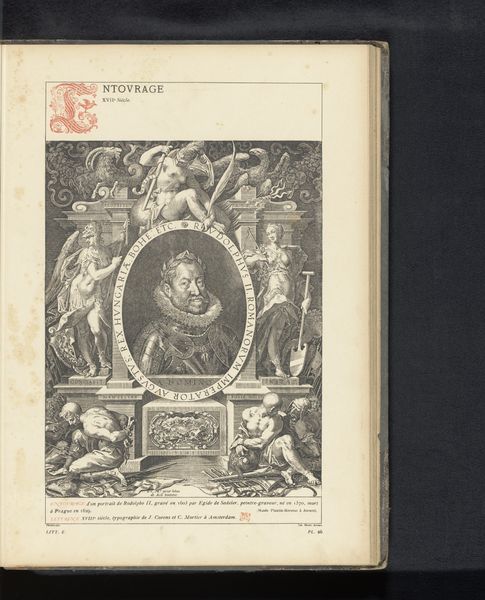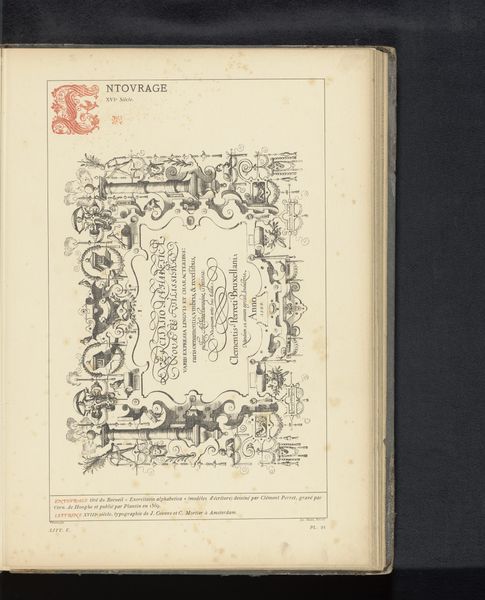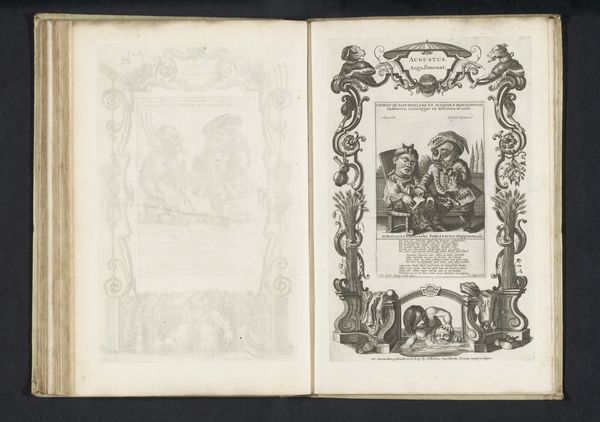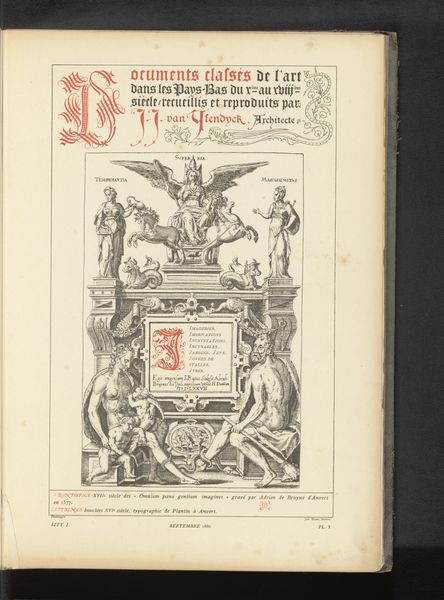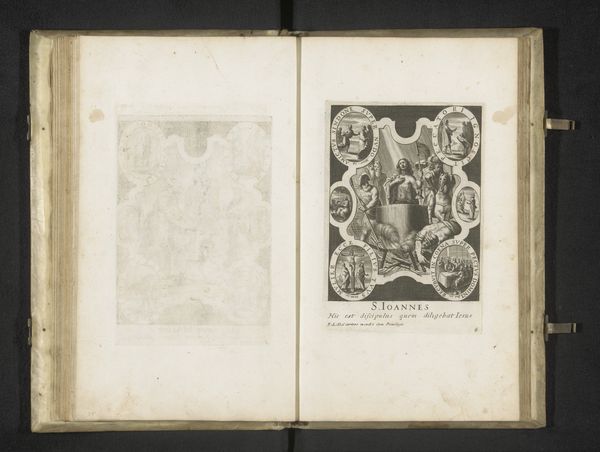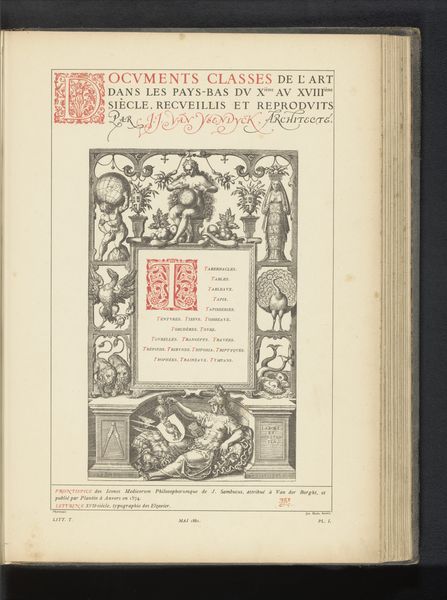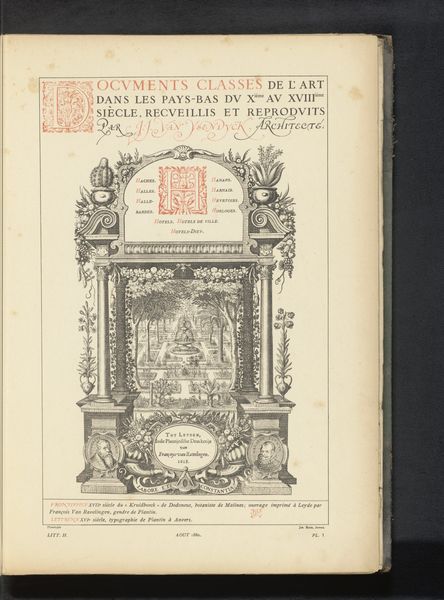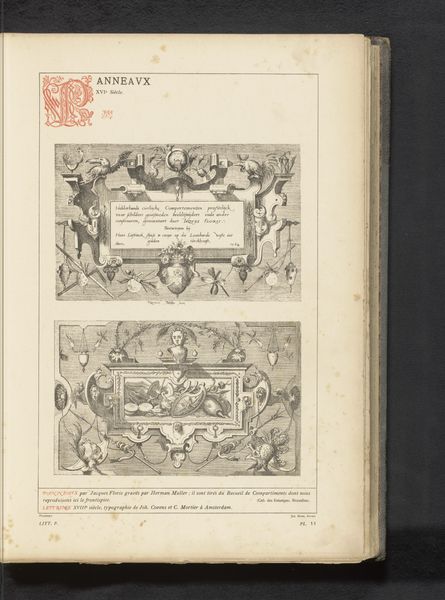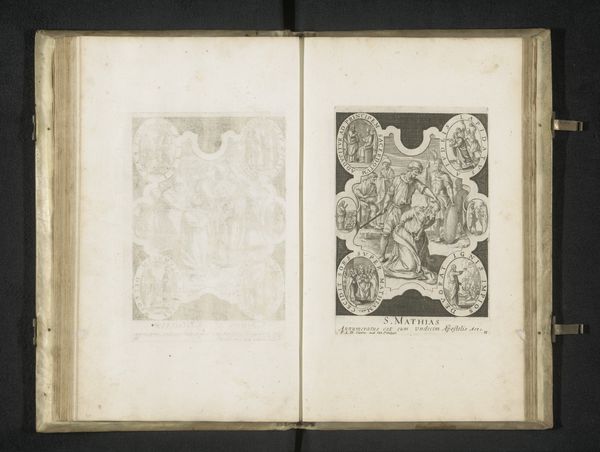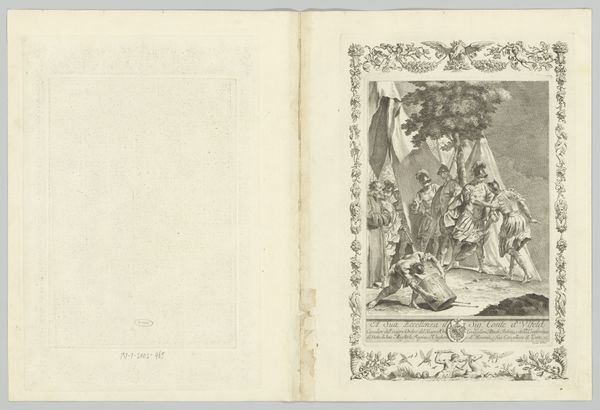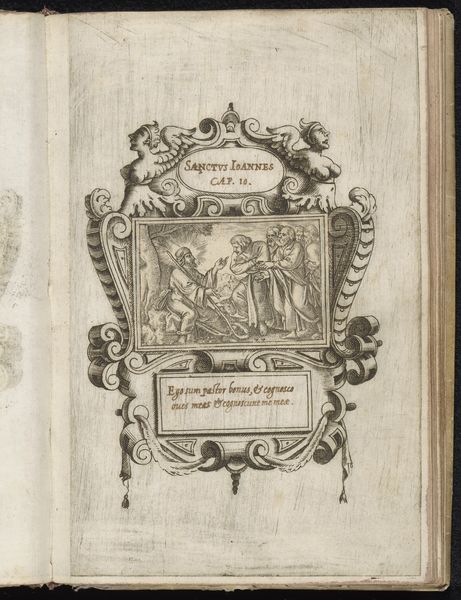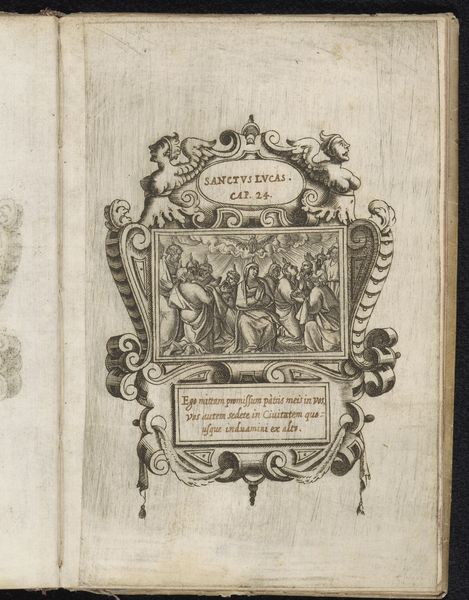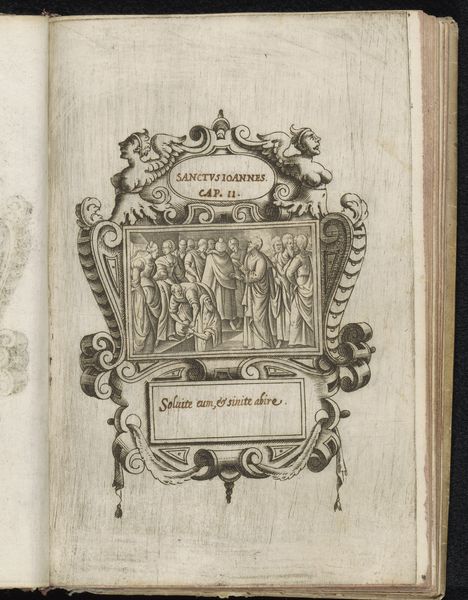
Reproductie van een prent van een man en twee fabelachtige wezens met een gedecoreerde rand door Dirck Volckertsz. Coornhert before 1880
0:00
0:00
print, paper, ink, engraving
# print
#
figuration
#
paper
#
ink
#
line
#
history-painting
#
northern-renaissance
#
engraving
Dimensions: height 268 mm, width 179 mm
Copyright: Rijks Museum: Open Domain
Curator: This print is a reproduction of an engraving, made before 1880, after an original design by Dirck Volckertsz. Coornhert. It depicts a man with two mythological creatures, all framed by an ornate border. Editor: My initial impression is one of contained drama. The stark lines and contrasting textures within the engraving suggest a hidden narrative. It almost feels theatrical, presented as if on a small stage. Curator: Coornhert, a significant figure of the Northern Renaissance, was deeply engaged in humanist ideals and reform. Prints like this one played a key role in disseminating ideas during that era. We have to consider the rise of the printing press and its democratization of knowledge, moving away from an almost exclusively patronage art model. Editor: And you can certainly see how the artist leverages the engraving medium to create a strong visual language. The lines, so deliberately etched, delineate form but also contribute to the overall texture and atmospheric depth, especially within the characters' expressions and gestures. It calls attention to its very medium. Curator: I agree. These prints also were vital within the networks of artistic exchange. This artwork reflects how certain images acquired value beyond their immediate devotional context, becoming powerful conveyors of moral, religious, and political beliefs during a volatile era of religious conflict in Europe. Editor: If you remove those elements and analyze the form, there is great attention to spatial dynamics. Look at the deliberate arrangement of the figures; notice how the composition directs the viewer's eye, starting from the man to the curious beasts and finally back towards that complex and alluring, theatrical backdrop. Curator: Ultimately, a work like this reflects an early type of visual culture— the mass production of imagery. The relatively wide dissemination of art and ideas became not only possible but normalized during the Renaissance. Editor: Looking closely at the artist’s manipulation of lines and forms reveals the hand of someone not just skilled in their craft but also adept at imbuing emotionality into form. The formal tension creates a potent narrative. Curator: Indeed, this engraving is a potent reminder of how art history and culture became intrinsically interwoven with printmaking practices during that pivotal era. Editor: And how enduring visual power is born from an artist’s sensitive interplay with line, form, and, of course, that essential void which constitutes its frame.
Comments
No comments
Be the first to comment and join the conversation on the ultimate creative platform.
